North Atlantic Basin October Tropical Cyclone Climatology And October Outlook
09/27/2024, 5:00 am EDTNorth Atlantic Tropical Season Gaining Storms Fast; Very Warm Oceans Helping
10/10/2024, 12:49 pm EDTCharts of the day: Why was Europe wet warm season 2024?
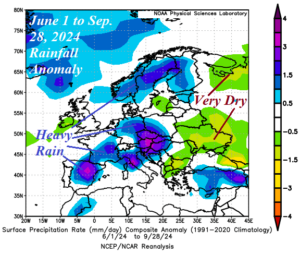
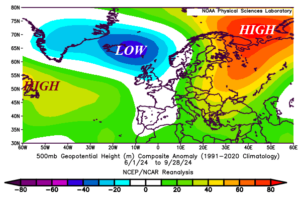
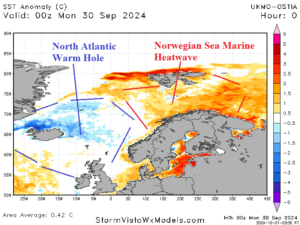
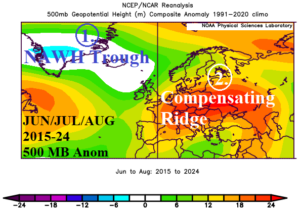
Discussion: Since June 1, 2024, much of Europe has observed above too much above normal rainfall most anomalous (according to NCDC/PSD) over Spain, Northern Italy, and Austria/Hungary. Meanwhile, farther downstream, an exceptionally dry 4 months was observed across Ukraine, Southwest Russia, and Northwest Russia. The upper air pattern prevailing during the 4-month period explains the dramatic change in rainfall regimes with a wet upper trough centered on Iceland encouraging moist North Atlantic flow across Europe while a compensating amplified ridge extended from Northwest Russia to the Black Sea region. The upper air pattern is well-correlated to the presence of the North Atlantic warm hole (NAWH) between Greenland and Western Europe and the Norwegian Sea marine heat wave (MHW). The NAWH pattern became established over 10 years ago and has caused a semi-permanent summertime trough over Greenland/Iceland and compensating ridge over Europe. The pattern was displaced slightly eastward during summer of 2024.
Week-2 Ahead Forecast valid October 6-12, 2024: More rain for Europe.
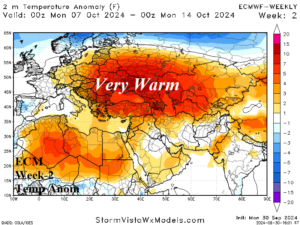
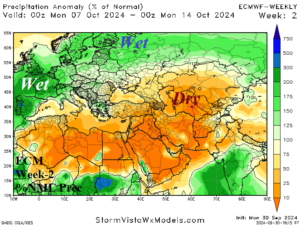
Discussion: The upper trough off Northwest Europe expands and soaks Portugal/Span to Scandinavia. Some of the wet weather works across Northwest Eurasia. Farther downstream, near and east of the Black Sea region is dry and warm.
Week-3 Ahead Forecast valid October 13-19, 2024: Wet pattern advancing eastward.

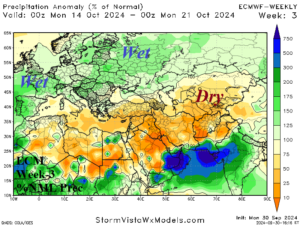
Discussion: The elongated upper trough shifts eastward across Europe during mid-October. Wet weather continues for much of Europe to Northwest Russia.
Week-4 Ahead Forecast valid October 20-26, 2024: Rains reach the Black Sea region.
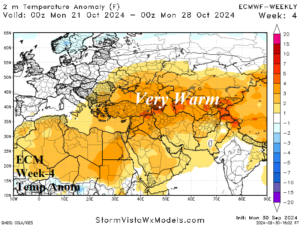
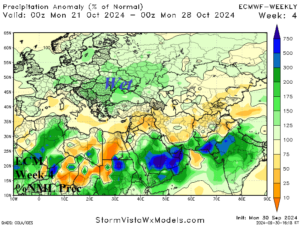
Discussion: ECM pushes wet weather into the Black Sea region later in October. Most of Europe is temperate while Western Europe is not as wet.
